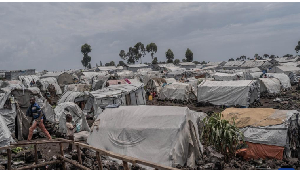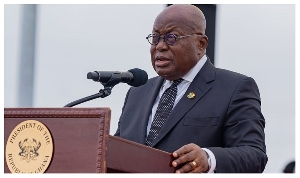Regional News of Monday, 23 April 2012
Source: GNA
University for Health and Allied Sciences takes off in September
The proposed University of Health and Allied Sciences (UHAS) for the Volta Region is certain to takeoff in September this year, Professor Fred Binka, its first Vice Chancellor asserted in Ho on Monday.
He was addressing a well attended public forum, organised under the auspices of the Volta Regional Coordinating Council.
At the forum, reports of activities concerning the establishment of the University, including policy-blueprint, human resource searches and physical structure build-ups were presented.
“We are on the ground and ready to start work in September 2012, with the first intake of 200 students,” Prof Binka stressed.
He said the process of certifying programmes to be offered with the National Accreditation Board were about starting and that as soon as the clearance was given advertisements for applications for admissions would be put out in the media.
Prof Binka said, the University Council was also in consultation with the relevant professional bodies for their input into course contents.
He said work on the permanent site would be developed as the University grew.
The UHAS was one of two public universities promised by President John Evans Atta Mills, the other being, University for Energy and Natural Resources, for the Brong Ahafo Region.
Perceived lethargy in the implementation of the Volta University, after the President cut the sod to signify start of work, led to criticism of government as reneging on its promise and appointees as ineffective.
This was followed by government public relations forays, such as the forum to present what they said was the true happenings.
Prof Binka said UHAS will have eight schools, including medicine, traditional and alternative medicine, health education, medical research and public health.
He said the institution would be essentially a technical entity with community service and research as important components of every programme.
Prof Binka said the University, with the main campus in Ho and another at Hohoe, would eventually affect other parts of the region.
He explained that, apart from the Regional Hospital serving as its Teaching Hospital, students would be attached to other hospitals across the region for their practical training.
Prof Binka said with time, UHAS would absorb the institutions of training belonging to the Ministry of Health in the region.
Prof Kofi Anyidoho, Chairman of the UHAS Council, presented a graphic account of physical structures being put up or acquired for the take off the University.
It includes land, staff accommodation, administrative block, laboratories and hostels.
Prof Anyidoho however expressed reservations about some of the buildings which he said had some structural defects.
He also told the forum about the step by step procedures being followed from the legal and administrative perspective to start the University, hinting that the core staff of the institution had been selected.
Mr Henry Ford Kamel, Regional Minister, said there could have been a gap in communication between the University Implementation Team and the public to cause the disquiet among the people and some disaffection for the government.
Concerns raised during an open forum included the need to properly acquire lands marked out for the University.
There was also a suggestion that the forum be replicated in the northern and southern parts of the region.**










